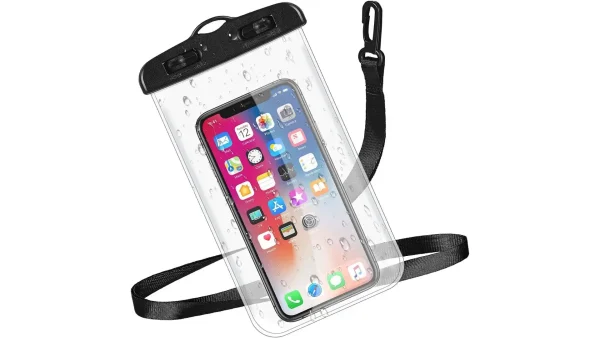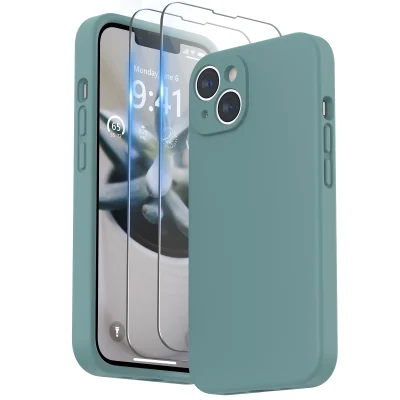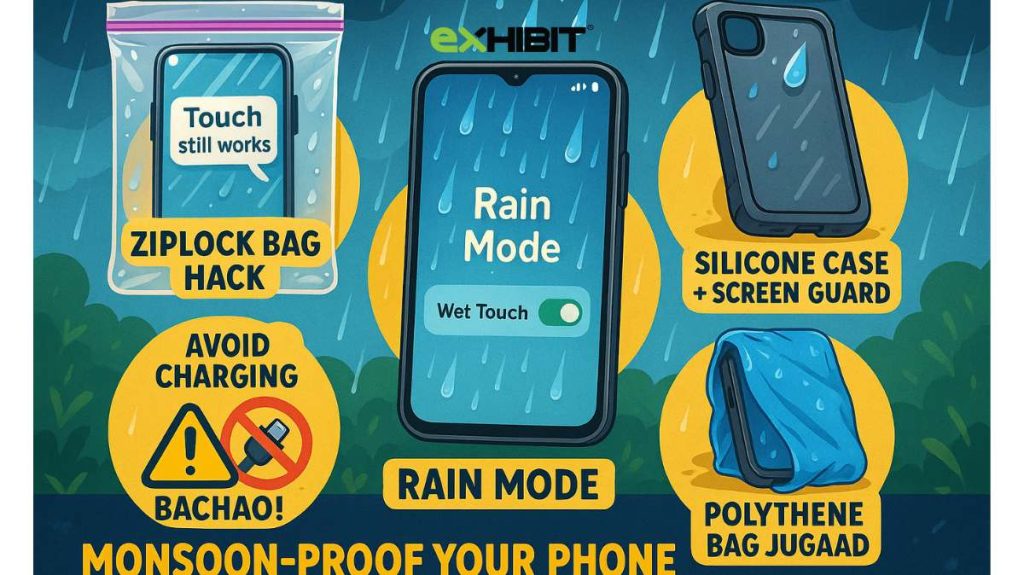Let’s face it, our smartphones have become extensions of ourselves. Whether it’s checking UPI payments after chai at the tapri, scanning a QR code for metro rides, or capturing the perfect monsoon moment in Matheran, we rely on our phones every waking hour. But when the skies in India open up in full monsoon glory, and your phone is waterproof, panic mode can set in.
Even in 2025, waterproofing is still a premium feature, mostly seen in higher-end flagships. If you’re still rocking a mid-ranger or a solid budget performer, your phone doesn’t come with an IP67 or IP68 rating. But don’t worry, this rainy season, we’ve got you covered (quite literally). Here are five clever, practical, and very desi ways to protect your non-waterproof phone when those Mumbai clouds burst or Bengaluru skies surprise you yet again.
1. Go Desi with a Ziplock or Reusable Waterproof Pouch

Before buying an expensive waterproof case, check your kitchen for a ziplock bag. It’s airtight, water-resistant, and lets you use your phone (touch works fine!) while keeping rain away.
For a sturdier option, grab a reusable waterproof pouch, the kind tourists use while river rafting in Rishikesh. You’ll find them cheap at local markets like Chandni Chowk or Linking Road.
2. Silicone Cases and Screen Guards

Most people think silicone cases and tempered glass are only for accidental drops, but they also offer a buffer against moisture. A snug-fitting silicone case can prevent water from seeping into your phone’s ports during a light drizzle. Combine it with a hydrogel screen protector or water-repellent coating, and you’ve got a basic water-resistance setup without spending a fortune. Brands like Spigen, Ringke, and local players like Portronics are offering better fit-and-finish at budget prices. Some of these even claim minor splash resistance, not full waterproofing, but it’s definitely better than nothing.
3. Switch to Rain Mode
Many 2025 smartphones (like Samsung One UI 7.0, Realme UI 6.0, Xiaomi HyperOS) now have “Rain Touch” or “Wet Finger Mode”. This boosts touch sensitivity when the screen is wet.
How to turn it on:
-
Go to Settings > Display/Touch Sensitivity
-
Enable Rain Mode
Also Read: How to Find Your Wi-Fi Password on iPhone and Android Devices
4. Beware the Charging Trap
One of the most common post-rain disasters is trying to charge a slightly damp phone. It’s the quickest way to short-circuit your beloved device. Even a little moisture in the USB-C or Lightning port can fry internal circuits or lead to a “Moisture Detected” error that won’t go away. Carry a soft microfiber cloth or tissue in your bag during monsoon season. If your phone gets wet, power it down, gently dab it dry (especially around the charging port), and let it air out before connecting to a charger.
-
Power it off
-
Dry the port with a microfiber cloth
-
Wait before plugging in
Also: Avoid fast-charging in damp environments like train stations, roadside cafés, or during power outages where you might be tempted to juice up your phone quickly.
5. Make Use of India’s Favourite Backup
Yes, the humble polythene bag, banned in some states but somehow still miraculously available, can be your emergency raincoat for your phone. Just wrap your phone and tuck it inside your bag, or use it as a makeshift pouch if you’re caught in a surprise cloudburst. While it won’t allow for usage during the rain, it’ll at least save your phone from water damage. Even better? Opt for biodegradable or compostable plastic bags available at general stores. Eco-friendly jugaad is the way forward.
Stay Dry, Stay Smart
India’s monsoon is magical, but unpredictable. And unless you’ve got a waterproof beast of a phone, you’re always one step away from a potential disaster. But with a bit of planning, some jugaadu spirit, and a few everyday items, you can brave the storms without risking your device.
So, whether you’re heading out for a vada pav by the beach or documenting the beauty of Cherrapunji’s rainfall, follow these tips. Because nothing dampens a perfect monsoon vibe faster than a waterlogged phone and the dreaded trip to the service centre.


